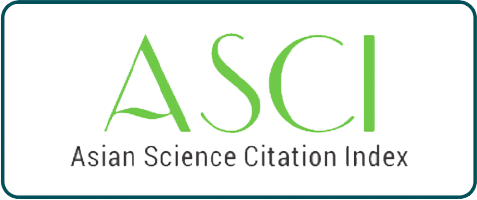Volume: 52 Issue: 1 - 2012
| RESEARCH ARTICLE | |
| 1. | Prevalance Of Skin Diseases In Childhood In Two Different Region of Turkey: The Retrospective Analysis Emine Çölgeçen, Öznur Küçük, Ayşe Yeşim Göçmen Pages 1 - 7 INTRODUCTION: With this retrospective study, we aimed searching the prevalance of the children with skin diseases living in two different regions of our country and examined by two different departments. METHODS: 2307 children aged between 0-16years years who were referred to the dermatology outpatient clinic of Kahramanmaraş Elbistan State Hospital, 418 children aged between 0-16 years years who were referred to the pediatric outpatient clinic of İstanbul Paflabahçe State Hospital in 2010 were retrospectively analyzed using the computer database. 2725 patients were categorized according to their demographical data and diagnosis. RESULTS: 2725 children patients aged between 0-16, 1470 of them female (%53.9%), 1255 of them were male (46.1%). The average age of the patients was 9.5 ± 5.2 years. The most common disease group was enfectious diseases (25.8%), eczema (21.1%), acne (17.3%) and the other groups (16.6%) followed this. In enfectious diseases, viral diseases was the most common experienced with 412 patients (15.1%). In eczema group, contakt dermatit was the most common dermatose with 194 patients (7.1%). In generally acne (17.3%) was the first of all the diseases. In policlinics according to the distribution of the disease groups; while the most common 3 diseases in dermatology clinic were acne (20.3%), viral infections (14.2%) and contact dermatitis (8.2%), the most common 3 diseases in podiatry clinic were urticaria (%23.2), viral infections (19.9%), and diaper dermatitis (19.4%). DISCUSSION AND CONCLUSION: In our opinion as epidemiological data on skin diseases were seen in paediatric period are few, the large-scale epidemiological studies to be carried out in cooperation with the other branches connected with pediatrics may be useful for regulation of health education programmes and in terms of preventive medicine. |
| 2. | The Comparison of the Effects of Glycerol Trinitrate, Esmolol and Lidocaine on Laryngoscopy and Tracheal Intubation Feray Baş, Rahşan Dilek Okyay, Volkan Hancı, Bülent Serhan Yurtlu, Hilal Ayoğlu, Işıl Özkoçak Turan Pages 8 - 14 INTRODUCTION: In our study, we aimed to investigate the effects of glyceryl trinitrate, esmolol and lidocaine on hemodynamic response to intubation. METHODS: After obtaining approval of ethic committee, 90 patients in ASA risc group I-II with mean operation time of 45-90 min were included in the study and randomly divided into three groups. Group G (Glyceryl trinitrate) received 25 μg of glyceryl trinitrate, Group E (esmolol) 1 mg/kg of esmolol and Group L (lidocaine) 1,5 mg/kg of lidocaine intravenous (iv). Propofol ve rocuronium bromide were used for anaesthesia induction. Hemodynamic data were recorded after induction and intubation. Fentanyl 50 μg was applied if systolic arterial blood pressure after intubation exceeded 20 % of control value. Anaesthesia maintenance was performed with 2 % sevoflurane in 65 % N2O - 35 %O2 mixture. RESULTS: There was no significant difference between the groups according to suppression of hemodynamic response. However, KAH, SKB and DKB values of Group L increased when compared with control values (p<0.05). There was no significant increase in KAH and SKB of Group E with intubation. After intubation opioid consumption was higher in Group L (p<0.05). DISCUSSION AND CONCLUSION: In conclusion, the three drugs used for suppression of reflex response to intubation were insuffient in study doses, however esmolol prevented the hemodynamic response to intubation better than other drugs. |
| 3. | Distribution Of Metabolic Syndrome Components In Patients With Non-Alcoholic Fatty Liver Disease Gül Babacan Abanonu, Arzu Adik, Cumali Karatoprak, Nalan Okuroğlu, Refik Demirtunç Pages 15 - 21 INTRODUCTION: In recent years, Non-alcoholic fatty liver disease (NAFLD), which can progress end-stage liver disease has an increasing clinical and pathological condition. Metabolic syndrome (MS) is often able to accompany NAFLD and adversely affect the prognosis of this condition. The purpose of this study was to determine the prevalence of MS and its components in our subjects with diagnosis of NAFLD. METHODS: We included 28 patients that persistently elevated alanine aminotransferase (ALT) and/or aspartate aminotransferase (AST) levels for at least 3 months. Subjects that tested negative for markers of viral hepatitis, autoimmune hepatitis, monotest, ceruloplasmin, alpha -1 antitrypsin were included and NAFLD was diagnosed by two radiologists with ultrasound examination (Group I). As a control group, 28 healthy volunteers included with age and gender match with the cases (GroupII). Fasting blood glucose, lipid profile, ALT, AST, total protein, albumin, uric acid, blood samples were examined. Arterial blood pressure, body weight, height, waist circumference measured and recorded. Exclusion criteria: The use of alcohol, autoimmune hepatitis, viral hepatitis, comorbid situations like renal failure, COPD, patients with diabetes and patients using drugs that can causes NAFLD. The revised NCEP ATP III diagnostic criteria was used for the diagnosis of MS. SPSS for Windows 16.0 program was used for statistical analysis. RESULTS: 28 patients with NAFLD (21 women and 7 men) mean age was 49.57±7.85. In the control group (24 women and 4 men) mean age was 47.00±7.09. Age and gender did not differ significantly between the groups (p>0.05). Body weight, height and body mass index were similar in both groups while NAFLD patients had significantly higher waist circumference compared with controls (p<0.05). Fasting blood glucose, triglyceride, LDL, total cholesterol, ALT, AST, serum albumin, uric acid levels were significantly higher in NAFLD patients and HDL were significantly lower (p<0.05). Both systolic and diastolic blood pressure were significantly higher in Group I (p<0.05). The prevalence of MS found significantly higher in Group I (75% in Group I (21 patients) and 21.43% in Group II (6 patients) (p<0.001). DISCUSSION AND CONCLUSION: NAFLD is associated with greater risk for all components of MS. While managing NAFLD all of these components should be consider. As well as weight control, bringing back to the ideal levels of waist circumference should be one of the goals of the treatment. |
| 4. | Prognostic Importance Of Immunohistochemically Defined P16 Protein Expression In Gastrointestinal Stromal Tumors M. İlkay Tosun, Pembegül Güneş, Güray Kılıç, Fügen Vardar Akıcı Pages 22 - 30 INTRODUCTION: Gastrointestinal stromal tumors(GIST) are mesenchymal tumors which are thought to be originated from neoplastic transformation of intestinal pace maker cells normally found on intestine wall (interstisial Cajal cells-ICC) or their precursors. METHODS: In pathogenesis of GIST, different cell cycle regulators especially p16 have important role, however discussions about their prognostic importance stil continues. RESULTS: P16 protein loss is thought to be associated with high risk GIST. In recent studies p16 protein ekspression is assessed as bad prognostic factor. In this study, paraffin blocks and report archive of 43 subjects diagnosed as GIST in Haydarpafla Numune Hospital between years 1999-2009. P16INK4a is studied immunohistochemically. DISCUSSION AND CONCLUSION: Results are evaluated as dye density.According to risk categorisation, all subjects that are strongly(+++) painted with p16 are included in high risk group. None of the subjects in very low,low and intermediate risk group was painted strongly with p16.This result was statistically significant and evaluation ofimmunohistochemically defined p16 gene expression in GISTs can be accepted as an independent and proper prognostic parameter. |
| 5. | Evaluation Of Ultrasound Results for Screening Developmental Dysplasia Of The Hip Öznur Küçük, Aylin Okur Pages 31 - 34 INTRODUCTION: The aim of the study is to emphasize the importance o early detection of developmental hip dysplasia by newborn screening for hip ultrasonography (USG). METHODS: 181 children admitted to our outpatient clinic in the neonatal period between January 2010 and November 2010 are included the study after taking their families informed consent. Infants with congenital anomalies were excluded from the study. The children whose physical examination are normal, are screened by hip ultrasonography between 6th- 12th weeks. RESULTS: The study included 181 infants; 108 cases (59. 7%) were female and 73 (40.3%) were male. In 5 cases (%2.8) developmental hip dysplasia is determined. When the ultrasonography are classified according the Graf method; in 80of the children had type Ia (44. 2 %), in 96 of the children had type Ib (53%), in 4 of the children had type IIa (2.2%) and in 1 of the children had type IIb (0.6%) hip. In our study, type IIa, IIb, III and IV were considered dysplastic hips. All of the patients whom dysplastic hip are determined were female and the left side was affected. The patients with hip dysplasia are suggested to use double- cloth and called for control after 4 weeks. In the control only 1 patient hip dysplasia was persisted and applied a cast. In the follow- up this patients hip dysplasia is improved. DISCUSSION AND CONCLUSION: In healty children follow- up, the literature suggests to make a careful physical examination and if a risk factor is detected; recommends to examine by hip ultrasonography between postnatal 4th- 6th weeks. Early diagnose of hip dysplasia enhance the quality of life and can prevents the need of surgical interventions in the future. Fort his reason; hip ultrasonography which is non- invasive, cheap, easy to perform and which doesnt contain radiation has an important place in early diagnose of hip dysplasia. |
| 6. | Comparasion Of Endotracheal Intubation, Proseal Lma And Supreme Lma In Laparoscopic Cholecystectomy Şeref Mardinli, Dilek Subaşı, Berna Terzioğlu, Mehmet Erşahin, Erkan Özkan, Osman Ekinci Pages 35 - 44 INTRODUCTION: The insufflations of CO2 into the abdomen during laparoscopic surgery can cause gastric distention and gastroesophageal reflux. Devices used for keeping airway patent in difficult airway cases gained importance. In this study we compared the stress response and side effects of endotracheal intubation, ProSeal LMA and Supreme LMA in laparoscopic cholecystectomy cases. METHODS: A total of 120 adult patients, classified as ASA I-II and undergoing elective laparoscopic cholecystectomy (duration 12 h) were randomly allocated to one of three groups: endotracheal intubation group, ProSeal LMA group and Supreme LMA group. RESULTS: There was no statistically significant difference between the preoperative measurements of cortisol levels in all groups. The cortisol levels 1 min after intubation in group ETT was significantly higher than the cortisol levels measured in group ProSeal LMA and Supreme LMA. Peripheral oxygen saturation, end-tidal CO2, peak pressures, gastric and nasopharyngeal pH measurements were not different between groups. Hoarseness at postop 1 hour was found to be significantly higher in the group endotracheal intubation. Symptoms of hoarseness, sore throat and dysphagia were lower in the group ProSeal LMA and group Supreme LMA than that of the group endotracheal intubation. Insertion duration and insertion attempt number were not different between ProSeal LMA and Supreme LMA groups. DISCUSSION AND CONCLUSION: We concluded that PLMA and SLMA can be preferred instead of endotracheal intubation in laparoscopic surgical cases to provide effective ventilation with lesser side effects. |
| REVIEW | |
| 7. | Basic Terminology Of Immunogenetics Gülbu Işıtmangil, Refik Demirtunç Pages 45 - 51 Immunology and genetics are the rapidly developing sciences of the Medicine which have novel and specific techniques and terminology. Also they have been entegrated to other medical sciences at diagnostic and therapeutic areas. In this review basic terminology of immunology and genetics have been presented. |
| CASE REPORT | |
| 8. | Megaloblastic Anemia in Infancy: Case Report Zehra Esra Önal, Selçuk Gürel, Tamay Özkozacı, Ça¤atay Nuhoğlu Pages 52 - 54 The most common cause of megaloblastic anaemia in childhood is the deficiency of vitamin B12 and folate. The infants and young children with the deficiency, show the symptoms of irritability,nausea, apathy, hypotony, norocognitive retardation and the haematological signs like anaemia and pancitopenia. In this case we reported an 11 months aged infant taken to our clinic with vomiting, failure to thrive, pallor with a magalobalstik anemia. Maternal serum vitamin B12 concentration was low. Dietary vitamin B12 deficiency in infancy is rare and most reported cases are breast fed infants of mothers who themselves are deficient in vitamin B12. We concluded that during pregnancy and lactation, mothers should be supported with animal foods and supplements fortified with vitamin B12, since the defence of vitamin B12 plays a role not only in haematological parameters (anemia),but in neurocognitive development of children as well. |
| 9. | Fluid and Electrolyte Imbalance in the Perioperative Period Özcan Pişkin, Nurettin KURT, Volkan HANCI Pages 55 - 61 Fluid and electrolyte imbalance, one of the most important problems, especially intensive care units patients. Both of hypernatremia and hyperkalemia have special importance. In our case reports, we aimed that discussion of the treatment of electrolyte imbalance in the perioperative period. |
















